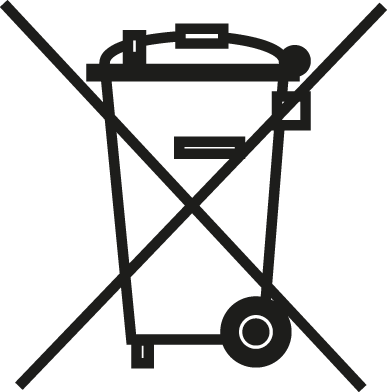Taking back and returning old electrical appliances and batteries
Taking back and returning old electrical appliances
Old electrical and electronic equipment needs to be disposed of separately from unsorted household waste. This means you can’t dispose of it in your household waste; you’ll need to have it collected and returned at a corresponding collection point.
Used disposable and rechargeable batteries not enclosed by the used appliance as well as lamps that you can remove from the used appliance without destruction need to be removed non-destructively from the used appliance before leaving them at a collection point.
Buying a new electrical or electronic appliance? IKEA will take back your old appliance with the same essential function free of charge at the place of purchase, delivery, or installation. This could be in the customer service/exchange area when you purchase an appliance from an IKEA store, or your home if you’re having the new appliance delivered and you’ve told us on concluding the contract that you want us to collect your old appliance at the same time as delivery. We’ll ask you whether you intend to return an old device when the new device is delivered when you sign the contract. If you’re buying online from IKEA.de, free removal from your home will be limited to heat exchangers (refrigerators and freezers), displays, monitors, and appliances with screens larger than 100 cm², and large appliances such as washing machines, tumble dryers, dishwashers, electric stoves, ovens, and cooktops, and lamps. You can return old devices such as light bulbs or tubes, small devices such as lamps, clocks, audio or video playback devices, small monitoring and control devices, adapters, sockets, and HDMI, audio, and video cables, and small IT and telecommunications appliances not exceeding 50 cm on any edge such as USB and network cables free of charge at a collection point in your area; refer to www.interzero.de/weee-annahmestellen, or ask at the customer service/exchange area at an IKEA store.
We’ll take small old electrical appliances no larger than 25 cm on any outer edge free of charge regardless of whether you’ve purchased a new IKEA appliance of the same type. You can return these old appliances free of charge at the collection points in your area – refer to www.interzero.de/weee-annahmestellen – or in the customer service/exchange area at IKEA stores. We’ll take back up to three old appliances in each device type.
You are responsible for deleting personal data from old appliances.
The crossed-out bin symbol below indicates electrical and electronic equipment that needs to be disposed of separately.
The IKEA WEEE registration number is: DE 69061567.
Refer to the following website of the BMUV for details on how we fulfil our obligations to provide information according to Electrical Appliances Act (ElektroG) Section 18 para. 4 sentence 3: https://www.bmuv.de/themen/kreislaufwirtschaft/statistiken/elektro-und-elektronikgeraete.
Battery disposal
Old batteries need to be disposed of separately from unsorted household waste. This means that you are not permitted to dispose of them in your household waste, but you are legally obliged to return them to a suitable collection point.
You can return old batteries to the appropriate collection point in the customer service area of your IKEA store free of charge, or to another collection point near you.
The crossed-out bin symbol that you’ll find on all IKEA batteries or their packaging identifies batteries that you need to dispose of at an old battery collection point.
Consider purchasing rechargeable or long-life batteries to avoid waste and avoid littering the environment – dispose of used batteries as described above instead. Also find out whether it’s possible to recondition or recycle old batteries for reuse.
Batteries may contain hazardous chemicals that can pollute the environment and endanger human health. This especially applies to batteries containing lithium, which can easily ignite and cause fires if handled improperly.
Disposable and rechargeable batteries in electrical devices that can be removed without causing damage need to be disposed of separately from the respective device. Separate collection and proper disposal will help prevent damage to the environment and human health. Batteries containing hazardous chemical substances such as cadmium (Cd), mercury (Hg), or lead (Pb) that exceed legal limits will show the respective chemical symbol below the crossed-out bin symbol.
Hg: Battery contains more than 0.0005 % mercury by mass
Cd: Battery contains more than 0.002 % cadmium by mass
Pb: Battery contains more than 0.004 % lead by mass
